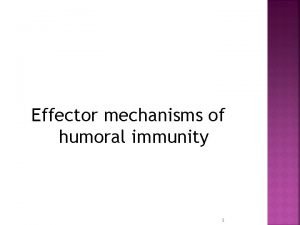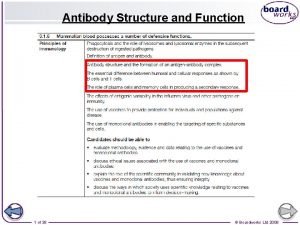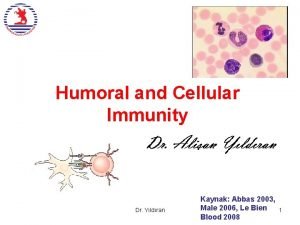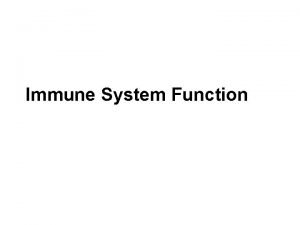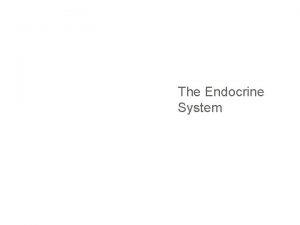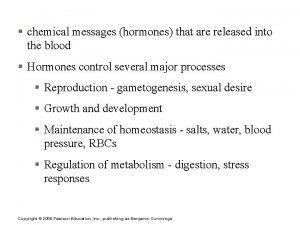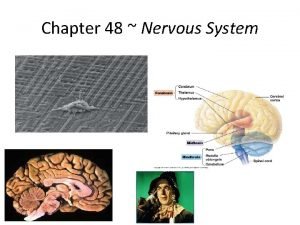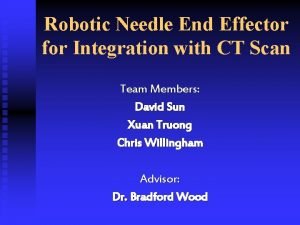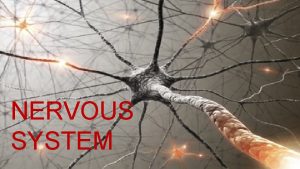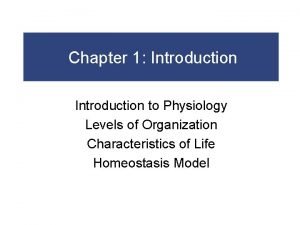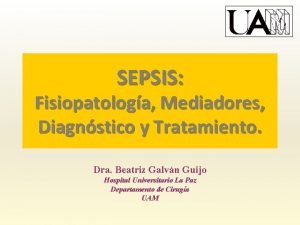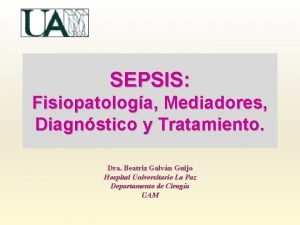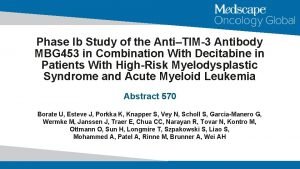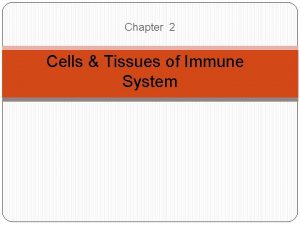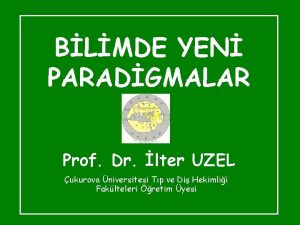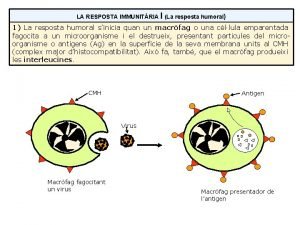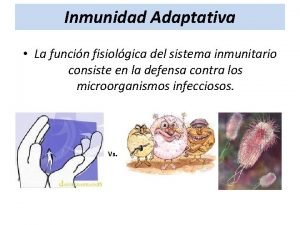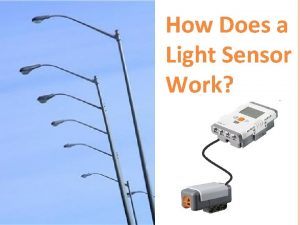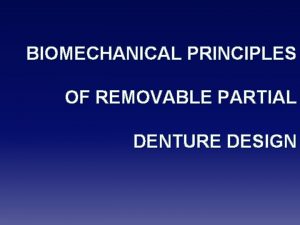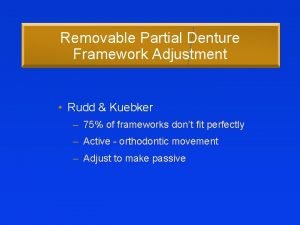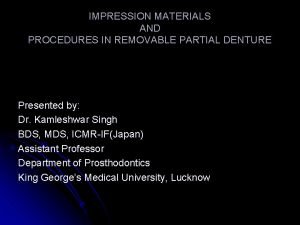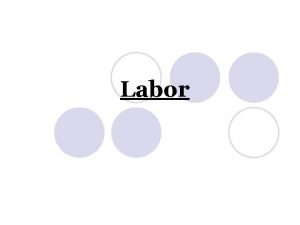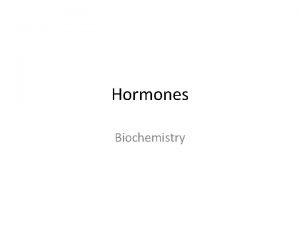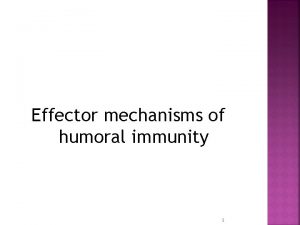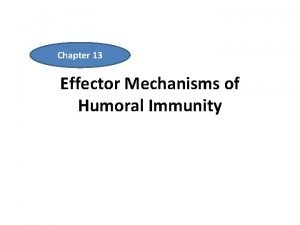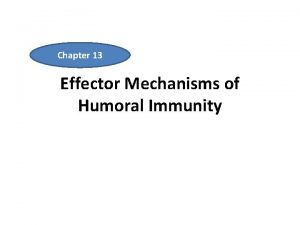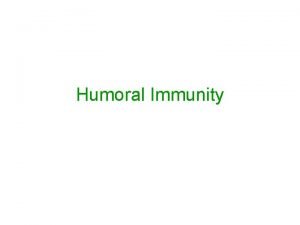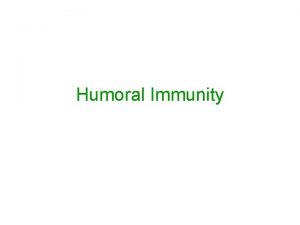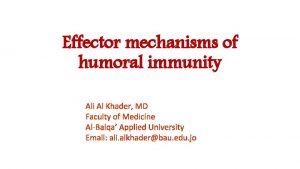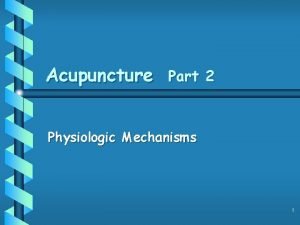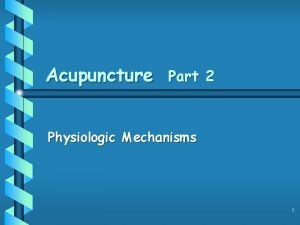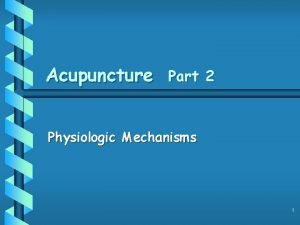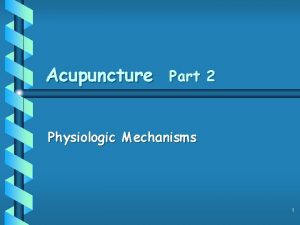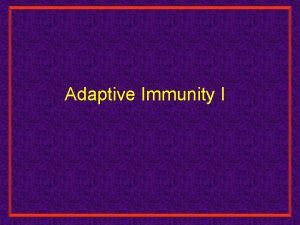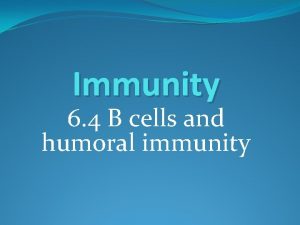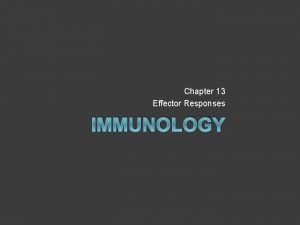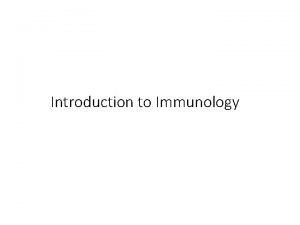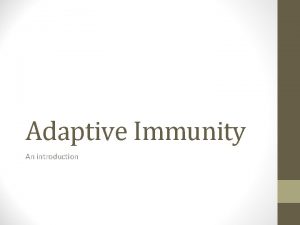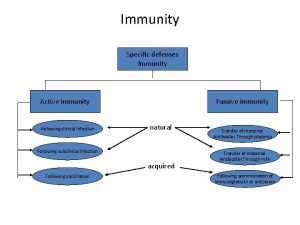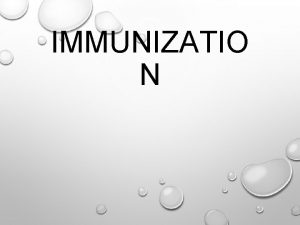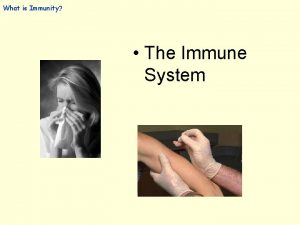Effector mechanisms of humoral immunity 1 Physiologic function





























- Slides: 29

Effector mechanisms of humoral immunity 1

Physiologic function of Abs is defence against extracellular microbes and microbial toxins Defects in Ab production result in increased susceptibility to infections Ab mediated elimination of Ags requires participation of other effector systems Produced Abs in lymphoid organs , perform their effector functions at sites distant from their production Many of the effector functions of Abs are mediated by the heavy chain constant regions of Igs and different isotypes serve different effector functions The requirement for Ag binding ensures that Abs activate various effector mechanisms only when they are needed

Neutralization of microbes and microbial toxins 3

4

5

Opsonization 6


Antibody-dependent cell- mediated cytotoxicity 8


10

11

• Host benefit: – – – opsonization to enhance phagocytosis phagocyte attraction and activation lysis of bacteria and infected cells regulation of antibody responses clearance of immune complexes clearance of apoptotic cells • Host detriment: – Inflammation, anaphylaxis

• C 1(qrs), C 2, C 3, C 4, C 5, C 6, C 7, C 8, C 9 • factors B, D, H and I, properdin (P) • mannose binding lectin (MBL), MBL associated serine proteases (MASP-1 MASP-2) • C 1 inhibitor (C 1 -INH, serpin), C 4 -binding protein (C 4 -BP), decay accelerating factor (DAF), Complement receptor 1 (CR 1), protein. S (vitronectin)

CLASSICAL PATHWAY antibody dependent LECTIN PATHWAY ALTERNATIVE PATHWAY antibody independent Activation of C 3 and generation of C 5 convertase activation of C 5 LYTIC ATTACK PATHWAY

C 1 r C 1 s Ca++ C 1 q C 2 C 1 complex C 3 C 4

C 1 r C 1 s Ca++ C 1 q C 4 b C 4 a

C 4 a C 1 r C 1 s Ca++ C 1 q a 2 C C 2 b _____ Mg++ C 4 b 2 a is C 3 convertase C 4 b C 2 a

C 4 a C 1 r C 1 s Ca++ C 1 q Mg++ C 2 b C 3 a ____ C 4 b 2 a 3 b is C 5 convertase; it leads into the Membrane Attack Pathway C 4 b C 2 a C 3 b

Lytic pathway Generation of C 5 convertase leads to the activation of the Lytic pathway

C 7 C 6 C 5 C 8 C 9

C 5 a C 5 b C 4 b C 2 a C 3 b

C 6 C 7 C 5 b

C 6 C 8 CC C 9 9 9 9 C 9 C C C 9 9 C 7 C 5 b

CR-I promote phagocytosis CR-II coreceptor for B cell activation CR-III phagocytosis CR-IV phagocytosis 24


Product Biological Effects Regulation C 3 a (anaphylatoxin) mast cell degranulation; carboxypeptidase- B enhanced vascular (C 3 -INA) permeability; anaphylaxis

Product Biological Effects Regulation C 3 b (opsonin) opsonization; phagocyte activation factors H & I C 4 a as C 3, but less (anaphylatoxin) potent (C 3 -INA) C 4 b (opsonin) C 4 -BP, factor I opsonization; phagocytosis

a) hereditary (relatively rare) b)acquired deficiency c) increased consumption d) decreased production Complement protein levels are usually increased, along with other unrelated proteins called acute phase proteins, during acute or chronic inflammation 29

DECREASED COMPLEMENT LEVELS MAY BE SEEN WITH: Recurrent microbial infections (usually bacterial) Autoimmune diseases, including SLE and vasculitis Hereditary angioedema Acquired angioedema Various types of kidney disease, including: glomerulonephritis, lupus nephritis, membranous nephritis, Ig. A nephropathy Malnutrition Septicemia Serum sickness (immune complex disease) 30
 Effector mechanism of humoral immunity
Effector mechanism of humoral immunity Humoral and cell mediated immunity difference
Humoral and cell mediated immunity difference Humoral immunity
Humoral immunity Difference between acquired immunity and innate immunity
Difference between acquired immunity and innate immunity 5 functions of antibodies
5 functions of antibodies Humoral stimulus
Humoral stimulus Thymosin and thymopoietin assist in the maturation of:
Thymosin and thymopoietin assist in the maturation of: Effector cells in nervous system
Effector cells in nervous system Endocrine system pearson
Endocrine system pearson End effector needle
End effector needle Effector organ
Effector organ Respuesta inmunitaria celular y humoral
Respuesta inmunitaria celular y humoral Stimulus in body temperature
Stimulus in body temperature Respuesta adaptativa humoral
Respuesta adaptativa humoral Receptores celulares
Receptores celulares Immune effector cells
Immune effector cells Immune effector cells
Immune effector cells Humoral patoloji paradigması
Humoral patoloji paradigması Resposta humoral
Resposta humoral Inmunidad adaptativa
Inmunidad adaptativa How a light sensor works
How a light sensor works End effector examples
End effector examples Quadrilateral configuration of clasp
Quadrilateral configuration of clasp Relief in rpd
Relief in rpd What is agricultural density ap human geography
What is agricultural density ap human geography Impression trays classification
Impression trays classification Physiologic mobility
Physiologic mobility Labor curve
Labor curve Glucocorticoids mineralocorticoids and androgens
Glucocorticoids mineralocorticoids and androgens Mechanisms of hypothalamic control over endocrine function
Mechanisms of hypothalamic control over endocrine function
